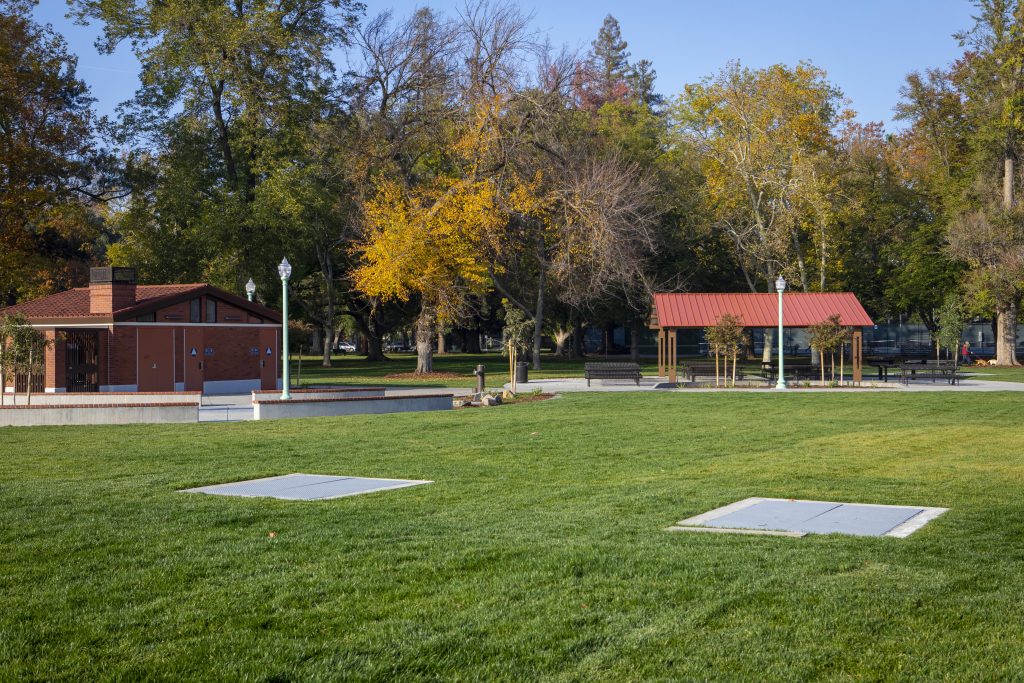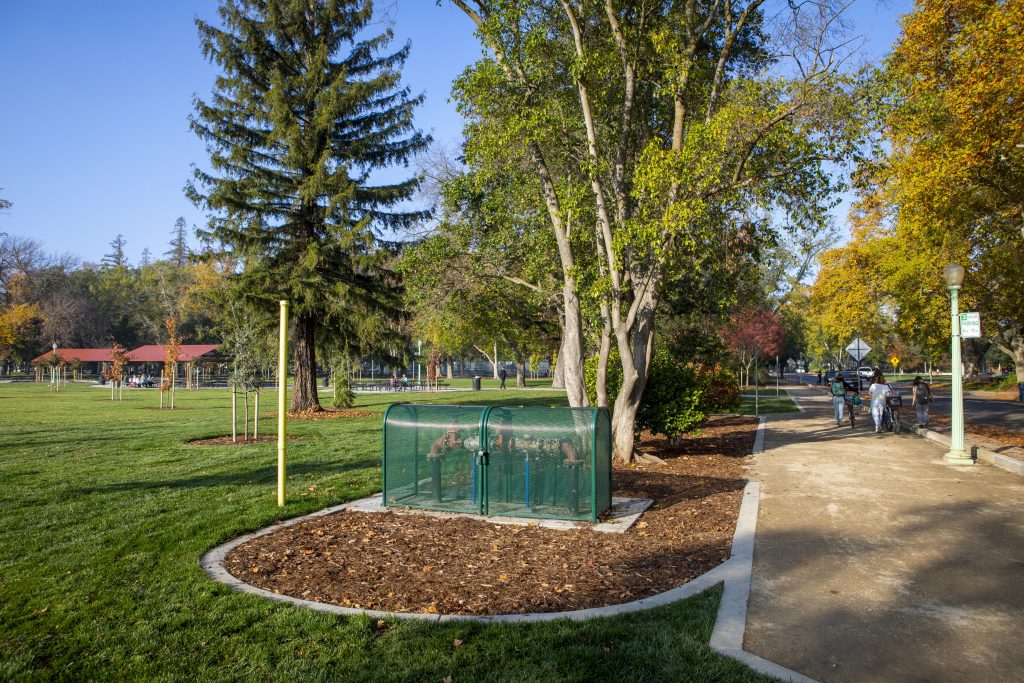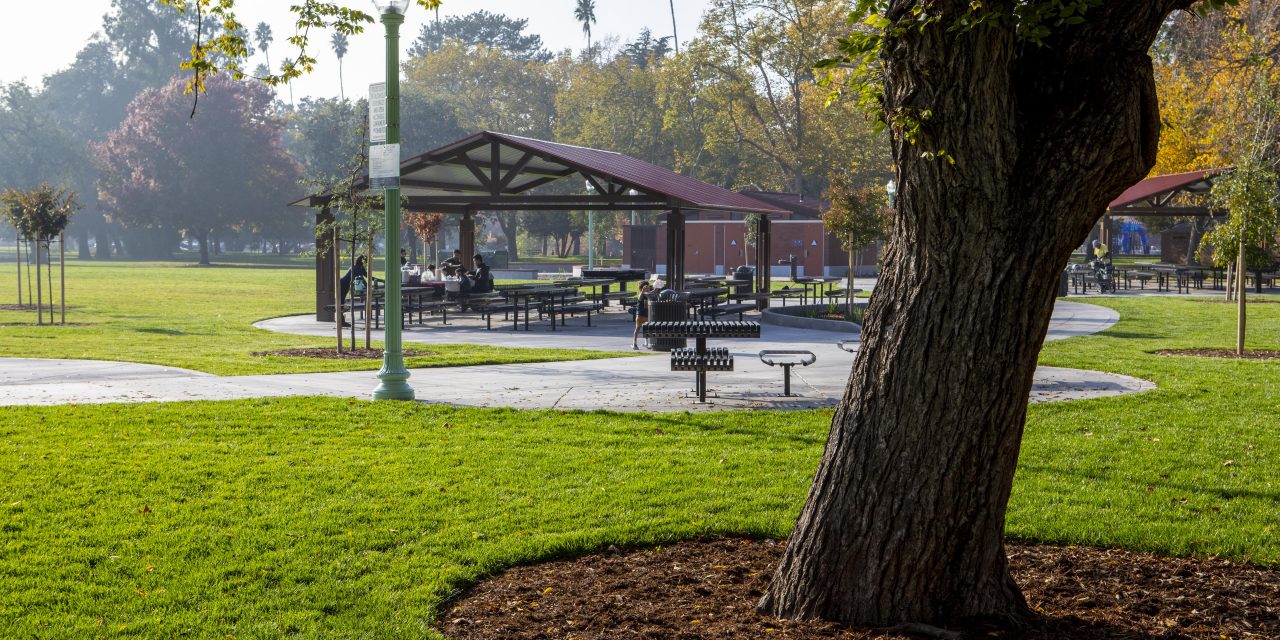After a recently completed renovation project, East Sacramento’s 13-ha (32-ac) McKinley Park now sports a collection of new amenities, including enhanced recreational areas, fresh vegetation, and a massive, 23-million-L (6-million-gal) underground stormwater tank.
The $25-million USD tank, the third “water vault” to be installed within city limits by the City of Sacramento Department of Utilities (SDU), aims to mitigate nuisance combined sewer overflows (CSOs) that have historically plagued McKinley Park and its surroundings, SDU describes on the project’s website.
“The McKinley Water Vault Project is a beautiful example of resilience and designing with community in mind,” said Gail Eaton, project manager with global engineering consultant Stantec (Alberta, Canada), who led design and implementation of the renovation.
Help From Below During Heavy Storms
Sacramento, like most communities served by combined sewer systems, routinely experiences backups of stormwater and wastewater when heavy storms deliver more water than the system can accommodate. Not only do these CSOs create unpleasant and costly burdens for local residents, but because of East Sacramento’s proximity to the Sacramento River, the events can also pose serious risks for local water quality.

The water vault, measuring 73-m (240-ft) long and 91-m (300-ft) tall, sits beneath about 0.5 m (2 ft) of soil and is practically invisible from the baseball field above it. Designed according to a 6-hour, 10-year storm event, the tank functions using a weir that diverts excess wastewater and stormwater overflowing from the combined sewer system into the receptacle. As the storm subsides, the tank then drains this excess water back into the collection system for purification at the nearby Sacramento Regional Wastewater Treatment Plant before it discharges into the Sacramento River.
Electrical controls for the weir are located aboveground, hidden from public view in secure housing attached to a new restroom facility.
According to SDU, the two existing water vaults in Sacramento have not yet received any odor complaints from passersby. However, as McKinley Park is a popular recreation destination, the design of the tank beneath it features a built-in odor control system to prevent wastewater odors from reaching the surface. The underground installation consists of a fan that pushes air from the vault through granular activated carbon-based beds that absorb odor-causing compounds, project documents describe.
Just days after the water vault’s completion, Sacramento was hit by an historic, 500-year storm on October 24. The storm — as much as 50 times more severe than what the vault was built to accommodate — caused only minor flooding in the area surrounding McKinley Park. Sacramento City Councilmember Jeff Harris told local NBC News affiliate KCRA 3that despite being overwhelmed during its first major test, the vault helped spare the neighborhood from far more serious damages.
“We truly averted a catastrophic flood here,” Harris said. “Without the vault, this storm would have wreaked havoc on this neighborhood such as it’s never experienced before.”
An Ideal Site
Planning behind the McKinley Park water vault project began in 2016 after a geotechnical survey confirmed the park as a suitable site for the vault. According to the project website, although the groundwater table tends to rise higher with closer proximity to the Sacramento River, the groundwater table beneath McKinley Park was still low enough for safe and affordable underground construction.

Before breaking ground in 2019, SDU and Stantec (Edmonton, Canada) wanted to ensure neighborhood buy-in. They solicited ideas for additional ways to improve McKinley Park’s value to the people who use it. Through a series of workshops and meetings with neighborhood organizations, business associations, fitness groups, and real estate representatives, project planners identified approximately $1 million USD-worth of aboveground improvements included within the scope of the construction.
These include, for example, a new, multi-use field and improved jogging paths in addition to new restrooms, picnic areas, and barbecue pits, according to a Stantec release. The newly reopened McKinley Park also features a smart sprinkler system to encourage water conservation during irrigation, shade structures to counteract urban heat-island effects, and nearly 300 new, drought-resistant trees and shrubs.
Learn more about the McKinley Park Water Vault Project at the SDU website.
Top image courtesy of Jeremy Sykes/Jeremy Sykes Photography

ABOUT THE AUTHOR
Justin Jacques is editor of Stormwater Report and a staff member of the Water Environment Federation (WEF). In addition to writing for WEF’s online publications, he also contributes to Water Environment & Technology magazine. Contact him at jjacques@wef.org.







